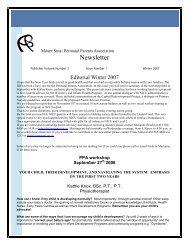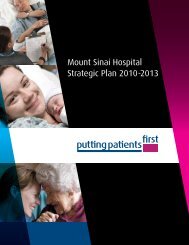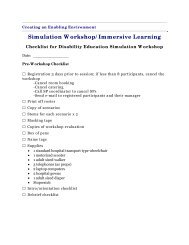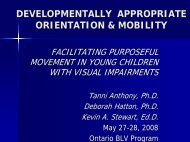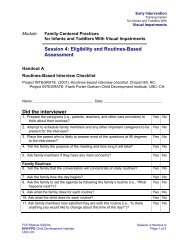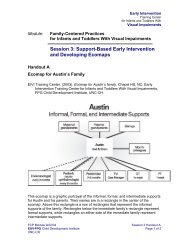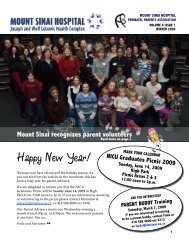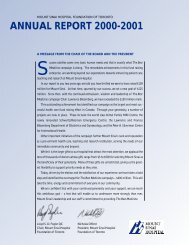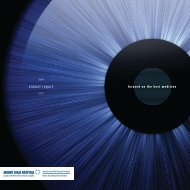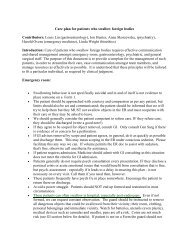Feeding and Nutrition for Your Baby - Mount Sinai Hospital
Feeding and Nutrition for Your Baby - Mount Sinai Hospital
Feeding and Nutrition for Your Baby - Mount Sinai Hospital
You also want an ePaper? Increase the reach of your titles
YUMPU automatically turns print PDFs into web optimized ePapers that Google loves.
My baby is sick <strong>and</strong> not eating. What do I do with my milk? 1<br />
Pumped milk can be frozen <strong>for</strong> later use. Unless told otherwise, the milk from an<br />
entire pumping should be pooled <strong>and</strong> then divided into containers <strong>for</strong> freezing.<br />
Freezing retains the nutrients of milk, but frozen milk has less protection against<br />
infection.<br />
<strong>Your</strong> baby's doctor may want to use fresh milk when the baby starts to feed.<br />
Fresh milk is (milk that has not been frozen) can be refrigerated <strong>for</strong> 24 hours. Ask<br />
you baby's nurse about the guidelines <strong>for</strong> your nursery.<br />
Will my milk provide my baby with all the things that s/he needs<br />
to grow? 1<br />
Milk from mothers who deliver early is different from milk from mothers who<br />
deliver on time. It has more protein, sodium, calcium <strong>and</strong> some other nutrients.<br />
Even so, breast milk is less rich in some of these things compared to what the<br />
baby would have received from the placenta if s/he were born full-term.<br />
Some preemies grow well on their mother's milk alone. Others, especially very<br />
small or sick preemies, are unable toh<strong>and</strong>le the amount of milk that it would take<br />
to get all the calories <strong>and</strong> nutrients that they need.<br />
The same is true of <strong>for</strong>mula-- preemie <strong>for</strong>mulas are richer in these things than<br />
regular <strong>for</strong>mulas.<br />
<strong>Your</strong> baby's doctor may decide to enrich your milk to provide your baby with<br />
more calories <strong>and</strong>/or minerals. There are many ways to do this:<br />
• Adding specific nutrients to the milk such as fat, protein or sugars.<br />
• Mixing your milk with preemie <strong>for</strong>mula. This is common if your baby needs<br />
more milk than you can currently supply.<br />
• Human milk <strong>for</strong>tifiers. These are powders or liquids added to your milk<br />
be<strong>for</strong>e it is given to the baby.<br />
• Giving more "hind" milk to the baby. This is the last portion of milk pumped<br />
from the breast. It is richest in fat <strong>and</strong> calories.<br />
As the baby gets older <strong>and</strong> no longer needs to be tube fed, his/her need <strong>for</strong> extra<br />
nutrients <strong>and</strong> calories also decreases. So, by the time the baby can completely<br />
breast feed, usually breast milk supplies all the calories that s/he needs. <strong>Your</strong><br />
baby may still need additional vitamins <strong>and</strong> iron.<br />
1<br />
Reprinted with permission from the University of Wisconsin<br />
2<br />
Copyright © 2008 <strong>Mount</strong> <strong>Sinai</strong> <strong>Hospital</strong>, Toronto<br />
10 <strong>Feeding</strong> My <strong>Baby</strong>




